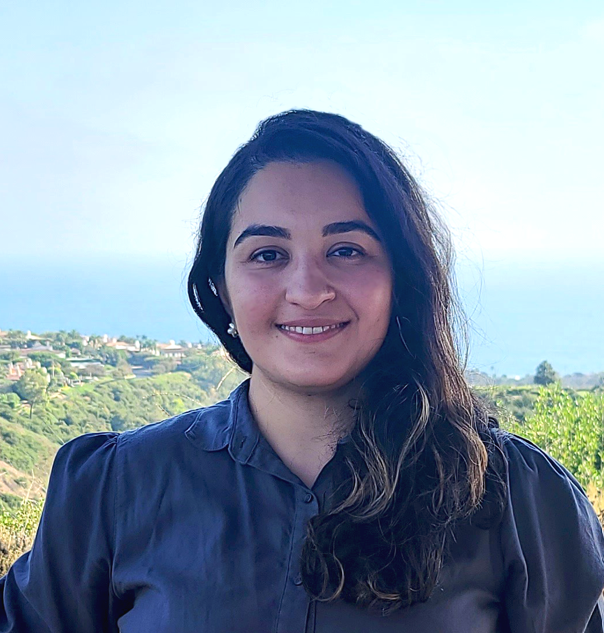
Ghazaleh Eskandari-Sedighi, University of Alberta
Article citation
Eskandari-Sedighi, G., Crichton, M., Zia, S. et al. Alzheimer’s disease associated isoforms of human CD33 distinctively modulate microglial cell responses in 5XFAD mice. Mol Neurodegeneration 19, 42 (2024).
https://link.springer.com/article/10.1186/s13024-024-00734-8
Identification of CD33m as a new protective factor in Alzheimer’s Disease development.
Immune cells in the brain, called microglia, are thought to be critical in Alzheimer’s disease (AD) development through numerous functions, including their ability to remove amyloid beta (Aβ), which is protein that accumulates in the brains of AD patients. In this study, Ghazaleh Eskandari-Sedighi, working in Matthew Macauley’s laboratory at the University of Alberta, focused on understanding the mechanism of action of a protein called CD33, which has been identified as one of the top-ranked drivers in the development of AD and that is predominantly found in microglia in the brain. By transferring different versions (called isoforms) of this protein in a mouse model of AD, they were able to show that these different isoforms have opposite effects on microglial cells and AD progression.
CD33 is a receptor that modulates immune response that exists in two forms: a long isoform CD33M (Major) and a short isoform: CD33m (minor). Understanding how CD33 isoforms differentially impact microglial cell function has been challenging due to functional divergence between CD33 from mouse and humans. In this study, the researchers introduced the human CD33 gene in a mouse model of AD, which accumulates Aβ protein. In these mice, they found that CD33 isoforms have opposing effects on the response of microglia to Aβ accumulation. The larger CD33M increases the total level of Aβ and formation of plaques with a diffuse nature, which correlates with fewer number of microglia as well as higher number of dysfunctional neurons. In contrast, CD33m gives rise to opposite outcomes; beyond decreasing total Aβ levels, CD33m skews formation of compact Aβ deposits, correlating with increased microglia and fewer dysfunctional neurons. Overall, this work reveals how CD33, as a top genetic susceptibility factor for AD, is connected to microglial cell function.
Understanding how human CD33 isoforms differentially impact microglial cell function has been challenging because the human CD33 gene encodes for both protein isoforms simultaneously, and the AD-associated genetic variant only shifts their abundance ratio.
This work is the first to clarify the functional impact of human CD33 isoforms in the context of AD susceptibility, revealing CD33 is not just a risk factor, and the short isoform is indeed a protective factor. This is a highly important finding because AD protective factors such as ApoE-Christchurch, ApoE-Jacksonville and PLCG2P522R are rare, yet extremely useful for understanding the mechanisms of resilience and development of efficient therapeutic strategies. In this regard, this work has provided new key information towards development of more efficient CD33-based therapeutics. Specifically, the current CD33-based treatments developed in the past are focused on depletion of the risk-associated isoform (CD33M), but these results suggest that a larger therapeutic window could be achieved by increasing the amount of CD33m in cells.
About Dr. Ghazaleh Eskandari-Sedighi
Dr. Ghazaleh Eskandari-Sedighi led this project as a postdoctoral fellow in Dr. Matthew Macauley’s laboratory at the University of Alberta. She is currently a postdoctoral researcher in Dr. Mathew Blurton-Jones’s group at the University of California, Irvine. Her work focuses on leveraging human stem cell-derived microglia and chimeric animal models to investigate protective microglial responses in Alzheimer’s disease. Her long-term goal is to establish an independent research group that integrates her expertise in biochemistry, molecular biology, and neuroimmunology to uncover mechanisms of neurodegeneration and translate these insights into the development of more effective therapeutics. You can learn more her work at https://sites.uci.edu/ghazaleh/.
Source of funding
This work was funded by support from Alzheimer Society of Canada postdoctoral fellowship (Postdoctoral Award, Discovery 23–10) and Glyconet Advanced Training Opportunity Program award (ATOP-17) to Dr. Ghazaleh Eskandari-Sedighi as well as the Canadian Institute of Health Research (201809PJT-409964-BCA-CBAA-193679), Glyconet (ND-10, ND-20), the Weston Brain Institute (RR202173), the Alzheimer’s Society of Canada (21–04), and a Canada Research Chair in Chemical Glycoimmunology to Dr. Matthew Macauley.
